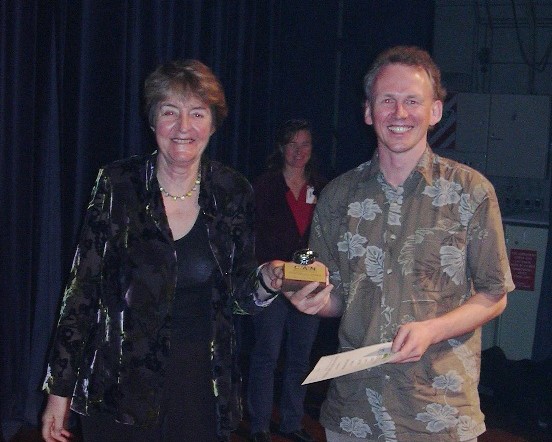Fundamentals of Planning and Design for Cycling: course notes
Where presented / published:
first edition, Christchurch
These notes accompanied the technical training course “Fundamentals for Planning and Design for Cycling”, commissioned by Transfund New Zealand (now part of Land Transport New Zealand). The structure of these notes followed the presentation of the one-day training course. It was intended that course attendees use these notes for more in-depth study of the topics covered in the course. The notes are no longer kept up to date.
Traffic engineers and planners use a variety of technical guidelines and manuals to design roads and other transport facilities. In New Zealand, much reliance is placed on the “Guide to Traffic Engineering Practice” published by Austroads, the association of Australian and New Zealand road transport and traffic authorities. Advice for the design of cycling facilities is provided in “Part 14 – Bicycles” of the guide (commonly known as “Austroads Part 14”, 1999). Austroads Part 14 “...is intended for road authorities, engineers, planners and designers involved in the planning and design of cycling facilities”.
The New Zealand Supplement to Austroads Part 14 (sometimes referred to as the “NZ Supplement”, 2004), published by Transit New Zealand, complements Austroads Part 14, highlighting issues appropriate for, or specific to, New Zealand circumstances. The NZ Supplement is also aimed at “road authorities, engineers, planners and designers” in New Zealand. It is intended as the “first port of call” for New Zealand cycling facility design. Designers are encouraged to consult the NZ Supplement first (before referring to Austroads Part 14), but both documents will need to be referred to in most cases of cycling facility design.
These course notes make strong reference to the NZ Supplement or Austroads Part 14, as appropriate. In addition, other references are made to mainly European guidelines (some aspects of which have been incorporated into the NZ Supplement). It is not expected that New Zealand practitioners should obtain and become familiar with these other references. Interested readers however may like to review them for further background understanding, as well as an appreciation of the considerable extent to which cycle engineering and planning has been developed in some countries.
It is important to remember too that specific engineering design is only part of the process; a key aim of this course is to instil "good design practice" skills in the participants, irrespective of what design standards they are required to follow. To that extent, these notes explain in some detail the reasoning behind many of the standards prescribed in the NZ Supplement and Austroads Part 14.
This course has also been developed to assist practitioners to effectively plan for and implement cycle facilities within their regions. The Land Transport Safety Authority (LTSA, now part of Land Transport New Zealand) has developed a Cycle Network and Route Planning Guide (CNRPG, 2004) that embodies many of these principles and complements the information contained in the NZ Supplement.
These course notes were originally written prior to the enactment (in Feb 2005) of the Traffic Control Devices (TCD) Rule and Road User Rule (RUR), which have replaced much of the previous NZ Traffic Regulations. Since then, the notes were continually updated (until about 2008) to ensure that they correctly reflected the current legal situation, evolving best practice and new guidelines.
The course material went through a peer review process to ensure their applicability to the New Zealand environment, as well as their alignment with the NZ Supplement and the Cycle Network and Route Planning Guide. The (former) LTSA, Transit New Zealand, and two independent reviewers were invited to give their feedback on the course material. The course developers acknowledge the valuable comments received from these parties.
The course material is available online on this website.






